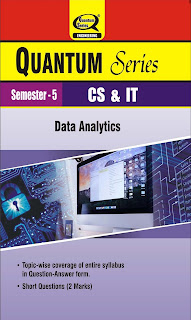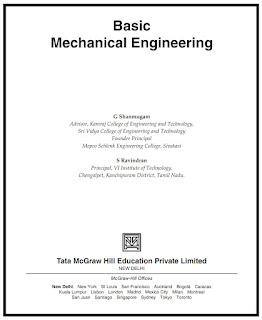UNICODE (Multilingual Computing)
Unicode is a standard for character encoding. The introduction of ASCII characters was not enough to cover all the languages. Therefore, to overcome this situation, it was introduced. The Unicode Consortium introduced this encoding scheme.
Internal Storage Encoding of Characters
We know that a computer understands only binary language (0 and 1). Moreover, it is not able to directly understand or store any alphabets, other numbers, pictures, symbols, etc. Therefore, we use certain coding schemes so that it can understand each of them correctly. Besides, we call these codes alphanumeric codes.
UNICODE
Unicode is a universal character encoding standard. This standard includes roughly 100000 characters to represent characters of different languages. While ASCII uses only 1 byte the Unicode uses 4 bytes to represent characters. Hence, it provides a very wide variety of encoding. It has three types namely UTF-8, UTF-16, UTF-32. Among them, UTF-8 is used mostly it is also the default encoding for many programming languages.
UCS
It is a very common acronym in the Unicode scheme. It stands for Universal Character Set. Furthermore, it is the encoding scheme for storing the Unicode text.
- UCS-2: It uses two bytes to store the characters.
- UCS-4: It uses two bytes to store the characters.
UTF
The UTF is the most important part of this encoding scheme. It stands for Unicode Transformation Format. Moreover, this defines how the code represents Unicode. It has 3 types as follows:
UTF-7
This scheme is designed to represent the ASCII standard. Since the ASCII uses 7 bits encoding. It represents the ASCII characters in emails and messages which use this standard.
UTF-8
It is the most commonly used form of encoding. Furthermore, it has the capacity to use up to 4 bytes for representing the characters. It uses:
- 1 byte to represent English letters and symbols.
- 2 bytes to represent additional Latin and Middle Eastern letters and symbols.
- 3 bytes to represent Asian letters and symbols.
- 4 bytes for other additional characters.
Moreover, it is compatible with the ASCII standard.
Its uses are as follows:
- Many protocols use this scheme.
- It is the default standard for XML files
- Some file systems Unix and Linux use it in some files.
- Internal processing of some applications.
- It is widely used in web development today.
- It can also represent emojis which is today a very important feature of most apps.
UTF-16
It is an extension of UCS-2 encoding. Moreover, it uses to represent the 65536 characters. Moreover, it also supports 4 bytes for additional characters. Furthermore, it is used for internal processing like in java, Microsoft windows, etc.
UTF-32
It is a multibyte encoding scheme. Besides, it uses 4 bytes to represent the characters.
Importance of Unicode
- As it is a universal standard therefore, it allows writing a single application for various platforms. This means that we can develop an application once and run it on various platforms in different languages. Hence we don’t have to write the code for the same application again and again. And therefore the development cost reduces.
- Moreover, data corruption is not possible in it.
- It is a common encoding standard for many different languages and characters.
- We can use it to convert from one coding scheme to another. Since Unicode is the superset for all encoding schemes. Hence, we can convert a code into Unicode and then convert it into another coding standard.
- It is preferred by many coding languages. For example, XML tools and applications use this standard only.
Advantages of Unicode
- It is a global standard for encoding.
- It has support for the mixed-script computer environment.
- The encoding has space efficiency and hence, saves memory.
- A common scheme for web development.
- Increases the data interoperability of code on cross platforms.
- Saves time and development cost of applications.
Difference between Unicode and ASCII
The differences between them are as follows:
| Unicode Coding Scheme | ASCII Coding Scheme |
| It uses variable bit encoding according to the requirement. For example, UTF-8, UTF-16, UTF-32 | It uses 7-bit encoding. As of now, the extended form uses 8-bit encoding. |
| It is a standard form. | It is not a standard all over the world. |
| People use this scheme all over the world. | It has only limited characters hence, it cannot be used all over the world. |
| The Unicode characters themselves involve all the characters of the ASCII encoding. Therefore we can say that it is a superset for it. | It has its equivalent coding characters in the Unicode. |
| It has more than 128,000 characters. | In contrast, it has only 256 characters. |
Difference Between Unicode and ISCII
The differences between them are as follows:
| Unicode Coding Scheme | ISCII Coding Scheme |
| It uses variable bit encoding according to the requirement. For example, UTF-8, UTF-16, UTF-32 | It uses 8-bit encoding and is an extension of ASCII. |
| A Unicode coding scheme is a standard form. | It is not a standard all over the world. Moreover, it covers only some Indian languages. |
| People use this scheme all over the world. | It covers only limited Indian languages hence, it cannot be used all over the world. |
| The characters themselves involve all the characters of the ISCII encoding. Therefore we can say that it is a superset for it. | It has its equivalent coding characters in the Unicode. |
| It has more than 128,000 characters. | In contrast, it has only 256 characters. |
Frequently Asked Questions (FAQs)
Q1. What is Unicode?
A1. Unicode is a standard for character encoding. The introduction of ASCII characters was not enough to cover all the languages. Therefore, to overcome this situation, it was introduced. The Unicode Consortium introduced this encoding scheme.
Q2. What are the famous types of encoding used in Unicode?
A2. The encodings are as follows:
- UTF-8: It uses 8 bits to represent the characters.
- UTF-16: It uses 16 bits to represent the characters.
- UTF-32: It uses 32 bits to represent the characters.
Q3. Give some uses of UTF-8.
A3. Its uses are as follows:
- Many protocols use this scheme.
- It is the default standard for XML files
- Some file systems Unix and Linux use it in some files.
- Internal processing of some applications.
Q4. What is the full form of UTF?
A4. UTF stands for Unicode Transformation Format.
Q5. What is the full form of UCS?
A5. UCS stands for Universal Character Set.
Read More
- What is Compiler and Types of Compiler
- What is Assembler and What is Assembly Language
- What is Utility Software and Types of Utility Software
- Office Tools and Functions of Office Tools
- What are Domain Specific Tools and Examples of Domain Specific Tools
- ASCII Definition, Use, Types, Unicode
- UNICODE Definition, Types, Uses, Advantages, Importance
- What is Memory in Computer Science Parts of Memory
- ISCII Definition, Languages supported in ISCII, Advantages, Disadvantages


